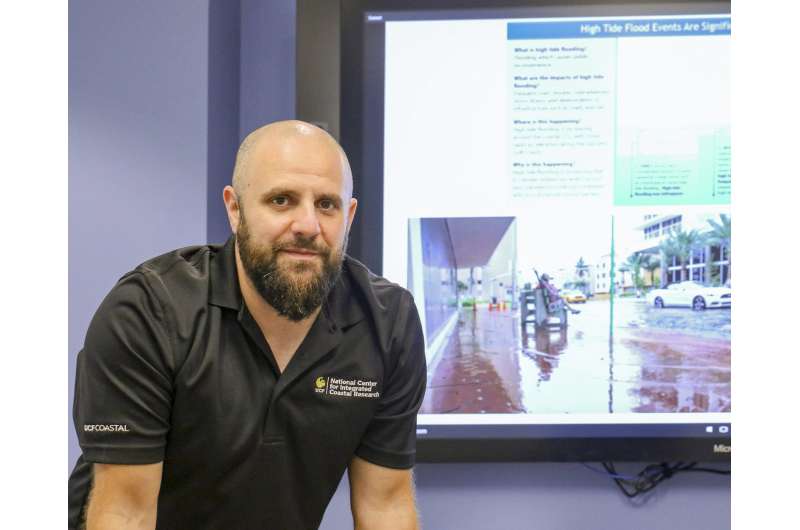Researchers link coastal nuisance flooding to Rossby Waves

A team of international researchers has found a link between seasonal fluctuations in sea level to a long-time phenomenon—Rossby Waves. And this connection may lead to a new tool to help coastal communities, such as Miami, better anticipate and mitigate "nuisance flooding" impacts.
"We've known for a long time that sea level is rising and that there are also important fluctuations happening on different time scales, including seasonal variations, which are the reason that nuisance flooding in cities like Miami typically occurs in late summer or early fall," said University of Central Florida coastal engineer Thomas Wahl, who was part of the research team.
"We can predict high tide and low tide and we know what causes sea level to vary seasonally, but we found that in some years the seasonal fluctuations are much larger along the Gulf and U.S. southeast coasts than in others, causing more nuisance flooding and increasing flood risk from storm surges during the hurricane season. These unusually large seasonal fluctuations were poorly understood and Rossby Waves appear to be the missing piece."
The team's findings are published in today's Nature Communications journal.
Rossby Waves, sometimes referred to as planetary waves, result mainly from the rotation of the Earth and they travel very slowly; it can take them months or even years to cross the oceans. Tracking them, and knowing how they can escalate the risk of nuisance flooding, provides the opportunity to forecast periods when tides are dangerously high several months before it happens, Wahl said.
"Using this information can help us develop an operational tool that gives home and business owners, as well as city managers the much-needed time to prepare and mitigate the negative impacts" he added.
Nuisance flooding, or sometimes called sunny-day flooding, occurs because of high tides, sea-level rise, land subsidence and the loss of natural barriers, according to the National Oceanic and Atmospheric Administration. The federal agency found that this kind of flooding causes such public inconveniences as frequent road closures. It overwhelms storm drains and compromises infrastructure and this type of flooding "has increased in the U.S. on average by about 50 percent since 20 years ago and 100 percent since 30 years ago."
Miami is no stranger to this kind of flooding. Some years the city has faced more of it compared to others and until this team completed its study, the driving forces weren't well understood.
Journal information: Nature Communications
Provided by University of Central Florida




















